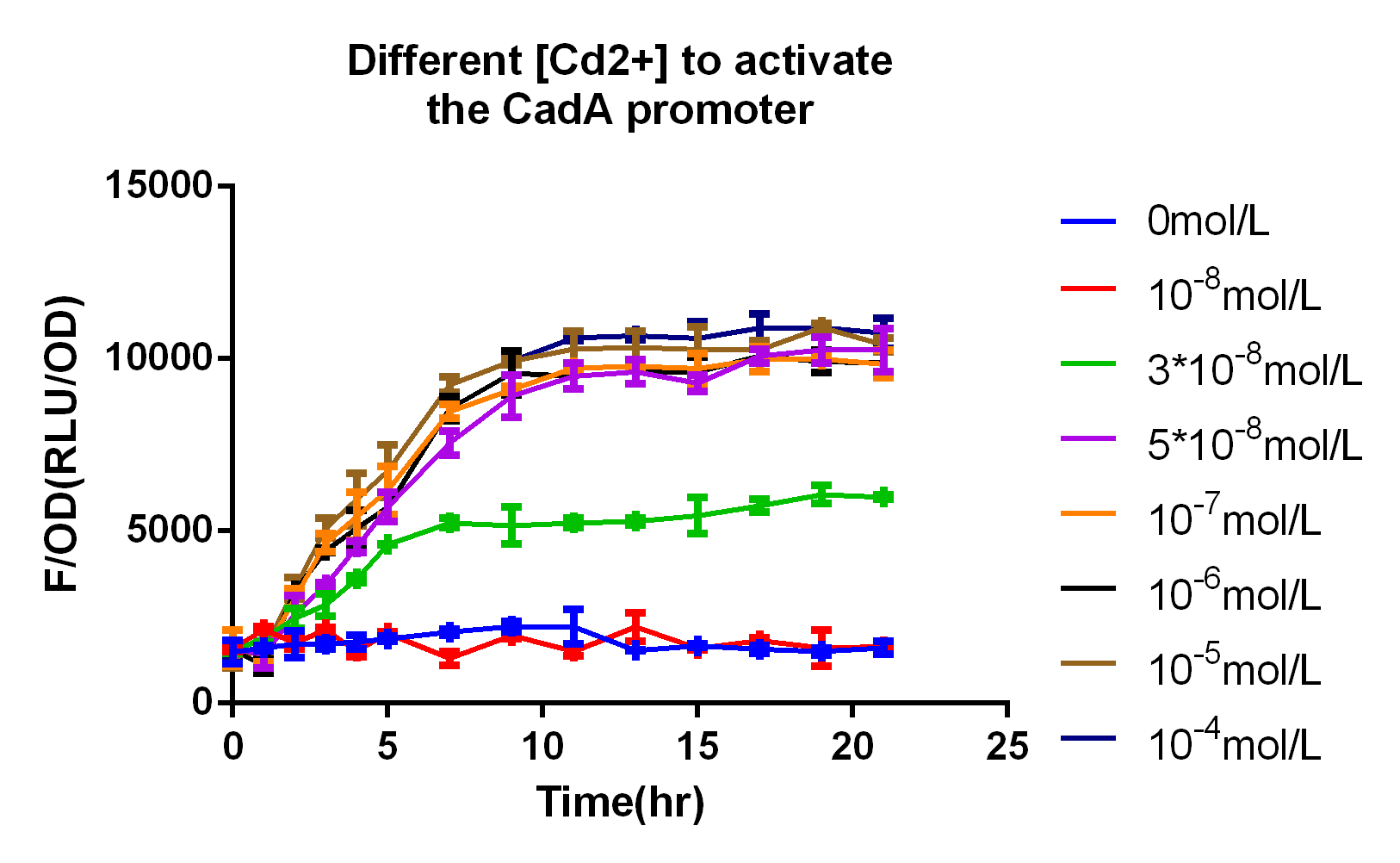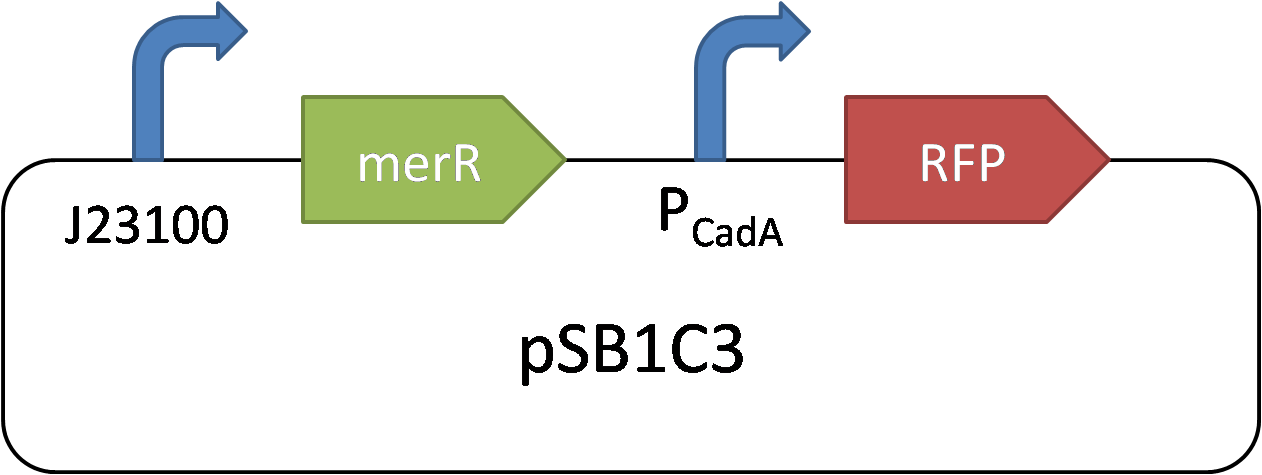Difference between revisions of "Part:BBa K1724000"
(→Comparing with previous parts about cadmium sensors) |
|||
| Line 9: | Line 9: | ||
== Comparing with previous parts about cadmium sensors == | == Comparing with previous parts about cadmium sensors == | ||
| − | [[image:|thumb|center| | + | [[image:2015SCUT-Con.png|thumb|center|1000px|Table 1. The comparison with the previous cadmium sensors.Our sensor system is the most sensitive among the sensor mentioned in the table.]] |
== 1.Promoter CadA quantification == | == 1.Promoter CadA quantification == | ||
Revision as of 17:38, 27 September 2015
Pcada
Introduction
CadA promoter is a cadmium-sensitive promoter. Its repressor is MerR. In high concentration of cadmium, the Cd2+ can rapidly bind with MerR and remove its inhibition of CadA promoter. The reverse is the opposition.
Comparing with previous parts about cadmium sensors
1.Promoter CadA quantification
In 2015 SCUT team, we expressed our three proteins by the downstream of promoter CadA. Promoter CadA is Cd-activated promoter with the presence of MerR. When enough Cadmium existed, the gene downstream can be express. We construct MerR/CadA operon and place the RFP behind the CadA promoter. As the detection limitation mentioned below, the lowest concentration of the cadmium ion is between 10^-8 and 3*10^-8. So we set up the gradient concentration(0, 3*10^-8,10^-7,10^-6,10^-5,10^-4) of the cadmium ion in order to get the pattern of our promoter.


2.Detection limit of promoter CadA
In order to test the detection limit of the promoter CadA, we first set up gradient concentration of Cadmium(10^-8,10^-7,10^-6,10^-5,10^-4mol/L)to estimate the probably range. As the result mentioned above, the promoter CadA can be activated over the concentration of 3*10^-8. So we set up the gradient of Cd2+ (3*10^-9, 10^-8, 3*10^-8, 5*10^-8) and obtain the detection limit of promoter CadA.


3. The specificity of the CadA promoter
Sequence and Features
- 10COMPATIBLE WITH RFC[10]
- 12COMPATIBLE WITH RFC[12]
- 21COMPATIBLE WITH RFC[21]
- 23COMPATIBLE WITH RFC[23]
- 25COMPATIBLE WITH RFC[25]
- 1000COMPATIBLE WITH RFC[1000]




